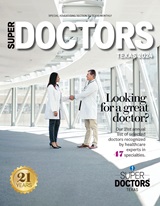Agency for Healthcare and Quality (AHRQ)
by Carolyn M. Clancy, MD
June 5, 2012
Until you or a loved one has broken a wrist or hip, it's easy to downplay the risks that come with low bone density. But these risks are serious, and the consequences can cause big life changes.
Low bone density occurs when our bodies lose bone tissue faster than it can be replaced. It is a major cause of broken bones, especially at the spine, hip, and wrist. People with low bone density have either osteopenia, a mild form of this condition, or osteoporosis, a more severe type.
Low bone density affects about 52 million Americans, both men and women. Osteoporosis is more common in women who have gone through menopause. An estimated 1 in 5 U.S. women over age 50 has osteoporosis. Ten percent of these women have osteoporosis of the hip, according to the Centers for Disease Control and Prevention.
While a broken bone is not a major concern when we're young, it is a serious health issue as we get older. A broken hip, for example, usually requires surgery, takes a long time to heal, and can require that a person need ongoing care.
Fortunately, some of these problems can be prevented. Today, more treatments are available to help reduce the risk of breaking a bone and to build new bone tissue faster. They include medicines, nutritional supplements, and exercise.
To help understand your options, a new consumer summary from the Agency for Healthcare Research and Quality's Effective Health Care Program describes the latest research findings on these treatments. It also helps you think about the kinds of questions to ask your doctor about a diagnosis of low bone density.
The summary covers:
Medicines: Researchers looked at five types of drugs for women with osteoporosis who have gone through menopause. They "graded" each medicine based on whether it reduced the risk of breaking a bone in the wrist, spine or hip, or whether the evidence is still unknown. Possible side effects of the medicines are also listed, along with additional information about how to deal with these side effects.
Nutritional supplements: Taking calcium and Vitamin D on its own or with prescription medicines may reduce the risk of developing osteoporosis. However, researchers are not sure if taking calcium or Vitamin D reduces the risk of breaking a bone in people who already have osteoporosis. The summary lists foods that are high in calcium and Vitamin D.
Exercise: Your doctor may recommend exercise as a way to strengthen bones, improve balance, and reduce the risk of falling. In particular, weight-bearing exercises like walking, lifting weights, and climbing stairs help make bones stronger.
Making a Decision: There are several factors to keep in mind as you decide which treatment is right for you. These include:
- Your risk for breaking a bone, based on results of a bone density test.
- Whether you need to start taking medicine now or if you can wait.
- The benefits and side effects of different medicines, your out-of-pocket costs for each option, and whether you can take a generic version.
A chart in the summary lists the wholesale prices of osteoporosis medicines, brand names, and price per month for a generic version. Your cost will depend on your health insurance, how much medicine you need, and whether the medicine comes in a generic form.
A new online decision aid called "Healthy Bones" was developed as part of this summary for women who have gone through menopause. It helps you calculate the risk of breaking a bone, gives detailed information about medicines to prevent a break, and lets you print information and questions to take to your doctor.
People used to think that the effects of low bone density couldn't be prevented. Today, we're learning that we have good treatment options that can lower risks and improve health outcomes. But for the best results, it's up to us to get educated about our choices and find the one that best fits our needs.
I'm Dr. Carolyn Clancy, and that's my advice on how to navigate the health care system.
Resources
Agency for Healthcare Research and Quality
Reducing the Risk of Bone Fracture: A Review of the Research for Adults with Lone Bone Density
http://www.effectivehealthcare.ahrq.gov/index.cfm/search-for-guides-reviews-and-reports/?pageaction=displayproduct&productID=1049
Effective Health Care Program
http://www.effectivehealthcare.ahrq.gov/index.cfm
Healthy Bones: About Osteoporosis
http://www.effectivehealthcare.ahrq.gov/ehc/decisionaids/osteoporosis/
Centers for Disease Control and Prevention
FastStats: Osteoporosis
http://www.cdc.gov/nchs/fastats/osteoporosis.htm
Current as of May 2012
Internet Citation:
Avoid Broken Bones: Learn About Low Bone Density. Navigating the Health Care System: Advice Columns from Dr. Carolyn Clancy, June 5, 2012. Agency for Healthcare Research and Quality, Rockville, MD. http://www.ahrq.gov/consumer/cc/cc060512.htm

